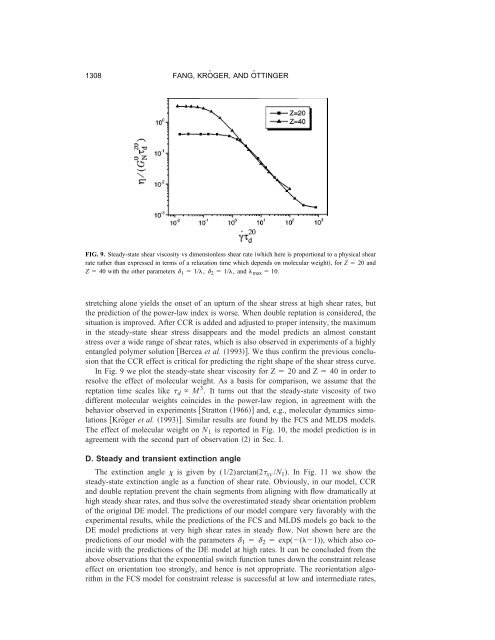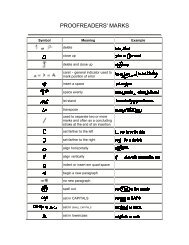View - Martin Kröger - ETH Zürich
View - Martin Kröger - ETH Zürich
View - Martin Kröger - ETH Zürich
Create successful ePaper yourself
Turn your PDF publications into a flip-book with our unique Google optimized e-Paper software.
1308 FANG, KRÖGER, AND ÖTTINGER<br />
FIG. 9. Steady-state shear viscosity vs dimensionless shear rate which here is proportional to a physical shear<br />
rate rather than expressed in terms of a relaxation time which depends on molecular weight, for Z 20 and<br />
Z 40 with the other parameters 1 1/, 2 1/, and max 10.<br />
stretching alone yields the onset of an upturn of the shear stress at high shear rates, but<br />
the prediction of the power-law index is worse. When double reptation is considered, the<br />
situation is improved. After CCR is added and adjusted to proper intensity, the maximum<br />
in the steady-state shear stress disappears and the model predicts an almost constant<br />
stress over a wide range of shear rates, which is also observed in experiments of a highly<br />
entangled polymer solution Bercea et al. 1993. We thus confirm the previous conclusion<br />
that the CCR effect is critical for predicting the right shape of the shear stress curve.<br />
In Fig. 9 we plot the steady-state shear viscosity for Z 20 and Z 40 in order to<br />
resolve the effect of molecular weight. As a basis for comparison, we assume that the<br />
reptation time scales like d M 3 . It turns out that the steady-state viscosity of two<br />
different molecular weights coincides in the power-law region, in agreement with the<br />
behavior observed in experiments Stratton 1966 and, e.g., molecular dynamics simulations<br />
<strong>Kröger</strong> et al. 1993. Similar results are found by the FCS and MLDS models.<br />
The effect of molecular weight on N 1 is reported in Fig. 10, the model prediction is in<br />
agreement with the second part of observation 2 in Sec. I.<br />
D. Steady and transient extinction angle<br />
The extinction angle is given by (1/2)arctan(2 xy /N 1 ). In Fig. 11 we show the<br />
steady-state extinction angle as a function of shear rate. Obviously, in our model, CCR<br />
and double reptation prevent the chain segments from aligning with flow dramatically at<br />
high steady shear rates, and thus solve the overestimated steady shear orientation problem<br />
of the original DE model. The predictions of our model compare very favorably with the<br />
experimental results, while the predictions of the FCS and MLDS models go back to the<br />
DE model predictions at very high shear rates in steady flow. Not shown here are the<br />
predictions of our model with the parameters 1 2 exp((1)), which also coincide<br />
with the predictions of the DE model at high rates. It can be concluded from the<br />
above observations that the exponential switch function tunes down the constraint release<br />
effect on orientation too strongly, and hence is not appropriate. The reorientation algorithm<br />
in the FCS model for constraint release is successful at low and intermediate rates,





